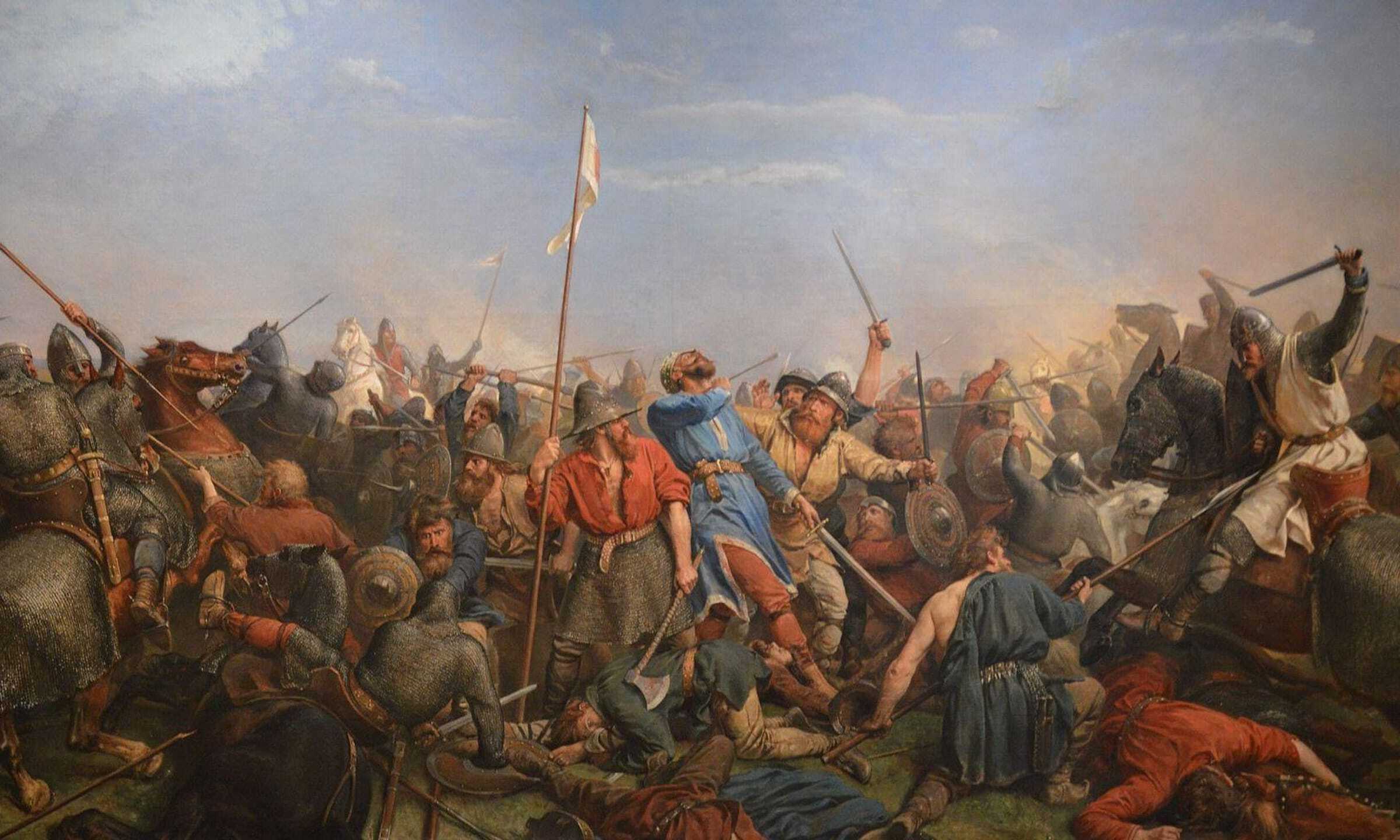
Ever heard of the Blood Eagle? This gruesome Viking execution method has fascinated historians and sparked debates for centuries. But what exactly is the Blood Eagle? In essence, it's a brutal form of punishment where the victim's back is sliced open, ribs are broken, and lungs are pulled out to resemble wings. Why did Vikings use such a horrific method? Some believe it was reserved for the worst traitors or enemies, serving as both a punishment and a terrifying warning. Is it real or just a myth? Historical records are sparse and often contradictory, leaving us to wonder if the Blood Eagle was a genuine practice or a legendary tale. Ready to learn more? Let's dive into 35 intriguing facts about this chilling Viking ritual.
Key Takeaways:
- The Blood Eagle was a gruesome Viking execution method involving spreading the victim's ribs to resemble wings and pulling out their lungs. It was used to punish traitors and honor Norse gods.
- Despite debates about its historical accuracy, the Blood Eagle's cultural significance and psychological impact have left a lasting impression on modern culture, contributing to the enduring fascination with Viking history.
The Origins of the Blood Eagle
The Blood Eagle is one of the most gruesome execution methods from Viking lore. It has fascinated and horrified people for centuries. Here are some chilling facts about this ancient practice.
- The Blood Eagle was a ritualistic execution method used by the Vikings.
- It involved cutting the victim's back open and spreading the ribs out to resemble wings.
- The lungs were then pulled out and draped over the ribs, creating a macabre display.
- This method was primarily used for punishing traitors or avenging the death of a loved one.
- The practice is mentioned in several Norse sagas, including the Orkneyinga Saga and the Tale of Ragnar's Sons.
Historical Accounts and Evidence
While the Blood Eagle is a well-known concept, its historical accuracy is debated. Let's explore some facts about the evidence and accounts of this practice.
- Some historians believe the Blood Eagle was more myth than reality.
- The earliest written accounts of the Blood Eagle come from the 12th century, long after the Viking Age.
- Archaeological evidence supporting the existence of the Blood Eagle is scarce.
- Some scholars argue that the descriptions in the sagas were exaggerated or symbolic.
- The lack of concrete evidence has led to ongoing debates among historians.
Cultural Significance
Understanding the cultural context of the Blood Eagle helps to grasp why such a brutal method was conceived. Here are some insights into its cultural significance.
- The Blood Eagle was seen as a way to honor the Norse gods, particularly Odin.
- It was believed that performing the Blood Eagle would ensure the victim's soul went to Valhalla.
- The ritual was also a display of power and dominance by the executioner.
- It served as a warning to others about the consequences of betrayal.
- The Blood Eagle reinforced the Vikings' reputation as fierce and ruthless warriors.
Modern Interpretations
The Blood Eagle has made its way into modern culture, often depicted in movies, TV shows, and literature. Here are some facts about its modern interpretations.
- The TV show "Vikings" featured a graphic depiction of the Blood Eagle.
- It has been referenced in various books, including Bernard Cornwell's "The Last Kingdom" series.
- The Blood Eagle appears in video games like "Assassin's Creed Valhalla."
- Modern depictions often emphasize the brutality and horror of the practice.
- These portrayals have contributed to the enduring fascination with Viking culture.
The Debate Among Scholars
The Blood Eagle remains a topic of debate among scholars. Here are some points of contention and differing opinions.
- Some scholars argue that the Blood Eagle was a form of poetic metaphor rather than a literal practice.
- Others believe it was a real execution method, albeit rarely used.
- The lack of consistent descriptions in historical texts adds to the confusion.
- Some historians suggest that the Blood Eagle was a later Christian invention to demonize the Vikings.
- The debate continues as new evidence and interpretations emerge.
Psychological Impact
The psychological impact of the Blood Eagle on both the victim and the witnesses cannot be understated. Here are some facts about its psychological aspects.
- The Blood Eagle was designed to instill fear and terror in the victim.
- Witnessing the Blood Eagle would have been a traumatic experience for onlookers.
- The ritualistic nature of the execution added to its psychological impact.
- The Blood Eagle served as a powerful tool for social control within Viking society.
- The fear of such a brutal death would have deterred potential traitors.
Comparisons to Other Execution Methods
The Blood Eagle is often compared to other historical execution methods. Here are some comparisons to provide context.
- The Blood Eagle is similar to the ancient Persian method of scaphism, which involved being eaten alive by insects.
- It can be compared to the medieval practice of drawing and quartering in terms of brutality.
- Unlike crucifixion, the Blood Eagle was more ritualistic and symbolic.
- The psychological impact of the Blood Eagle was akin to that of impalement used by Vlad the Impaler.
- Despite its brutality, the Blood Eagle remains one of the most infamous execution methods in history.
Final Thoughts on Blood Eagle
Blood Eagle, a brutal Viking execution method, has fascinated and horrified people for centuries. This gruesome practice involved cutting open the victim's back, breaking the ribs, and pulling out the lungs to resemble wings. Though some historians debate its authenticity, the legend persists in popular culture and historical discussions.
Understanding Blood Eagle sheds light on Viking culture's darker aspects and their complex societal norms. It also highlights the importance of separating myth from historical fact. While the Vikings were known for their seafaring and trading skills, tales like Blood Eagle remind us of their fierce reputation.
Whether fact or fiction, Blood Eagle remains a chilling symbol of Viking brutality. It serves as a stark reminder of humanity's capacity for cruelty and the importance of historical context in interpreting ancient practices.
Frequently Asked Questions
Was this page helpful?
Our commitment to delivering trustworthy and engaging content is at the heart of what we do. Each fact on our site is contributed by real users like you, bringing a wealth of diverse insights and information. To ensure the highest standards of accuracy and reliability, our dedicated editors meticulously review each submission. This process guarantees that the facts we share are not only fascinating but also credible. Trust in our commitment to quality and authenticity as you explore and learn with us.


